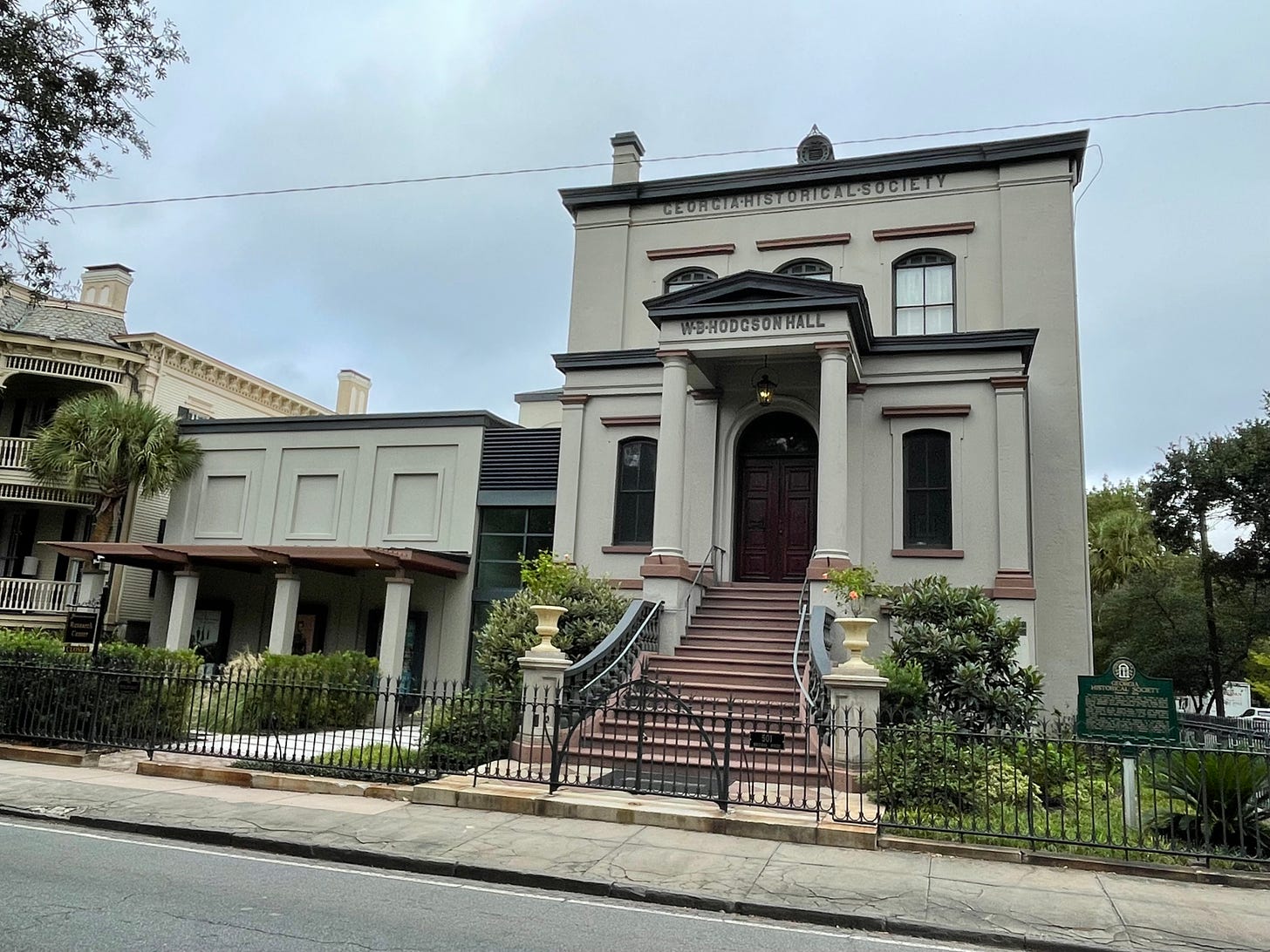Today was devoted to research. I drove the short distance from Beaufort to Savannah to spend the day in the beautiful reading room at the Georgia Historical Society. Founded in 1839, the Georgia Historical Society is the oldest continuously operated historical society in the South.
I very much appreciate the warm welcome that I received from my good friend and GHS president, Todd Groce, and Stan Deaton, who does a whole host of things, including leading teacher workshops and managing the historical markers program.
The GHS has some wonderful materials for teachers and I am hoping to help out with a teacher workshop in the near future.
If you find yourself in Savannah make it a point to visit the GHS. The reading room is open to the public during specific hours and the librarians are very friendly and willing to answer your questions if they aren’t too busy assisting researchers.
I’ve said this before. You simply can’t do serious research without the help of a friendly and knowledgeable archival staff. Their training and knowledge of their institutions’ holdings is invaluable to researchers.
Thanks to Nate Pedersen for his assistance and special thanks Kim Holcombe, who helped me stay on track and make it through all the files that I hoped to explore in the limited time that I had on this trip.
The GHS is a vital institution, especially at a time when history is under attack from so many quarters. The staff is committed to addressing the tough questions of history and helping the public wade through the myths and misconceptions that unfortunately still hold sway with many people.
Thanks, GHS.
As I drove back to Beaufort this evening I couldn’t help but reflect on my week thus far.
It’s been a remarkable experience. I can safely say that I’ve caught more than a glimpse of what Robert Gould Shaw experienced in this region, during what would prove to be the final weeks of his life.
More importantly, my time here has reminded me of the importance of exercising a certain humility and empathy when facing the past. It’s quiet right now in the streets of Beaufort. It’s allowed me to detach myself from the noise that increasingly has come to dominate public discussion about American history and the Civil War and Reconstruction eras specifically.
Anger and righteous indignation is all too often rewarded in our public discourse about our past. In some respects it is understandable, but the damage has become increasingly clearer to me over the past few years.
The debate over Confederate monuments, alongside the nation’s intense focus on racial justice, has reduced the popular perception of the past to a history and public memory that does little more than pit good v. evil.
But walking through the streets of Beaufort and the surrounding region over the past few days I can’t help but acknowledge the complexity and contradictions inherent in the history of slavery as well as the history and memory of the Civil War and Reconstruction—a history that I have devoted a sizeable chunk of my life to better understanding.
We need to find a way to exercise a certain humility and empathy when exploring the stories of Confederates as we do with the history of United States Colored Troops. You simply can’t consider or fully understand one without the other. These stories are all interconnected and can’t exist.
The building in which the local chapter of the United Daughters of the Confederacy was founded here in Beaufort…
…is just a few blocks from the local G.A.R. Camp.
A few short blocks from both sites is the home of Robert Smalls.
Walk through the small Confederate section in Beaufort National Cemetery and you will come across the grave of an officer who served in the 35th United States Colored Troops.
It would be easy to be outraged about the location of this grave, but we could also use it as an opportunity to reflect on the ways in which the stories of all these men overlap.
There is a lesson here if we are willing to put our own egos aside for a moment.
I am not suggesting that we ignore or minimize the larger causes that were at stake for different groups of Americans during the Civil War and Reconstruction eras.
What I am suggesting, however, is that we need to acknowledge the humanity of everyone, including and perhaps especially those who were committed to denying the humanity of others.
I’ve always believed that there is a moral component to how we engage with the past. We should resist treating people from the past as a means to an end, especially when those ends involve little more than reinforcing our own sense of superiority.
Another way to make this point is to ask yourself how you would like to be judged by the historians of the future.
OK, that’s it for today. Tomorrow it is off to Darien and St. Simons Island, Georgia.










I am curious, why would someone be outraged about the location of Lt Millers grave?
As a aside Beaufort National Cemetery is a lovely, interesting place. It may be the only one of the few national cemeteries that hold the graves of naval personnel killed in combat, Bluejackets from the Marblehead. Killed in a fight on the Stono River.
Love your writing about Beaufort. It is a visual, historical gem.
I hope you enjoy Darien. There is a History of Darien Museum, and I wrote a guide for various docents to use (I served as one myself). The story of Shaw's mother and the raising of money to restore a church is powerful. There are also some moving pictures of enslaved people working at various plantations in and around the area. I hope your trip goes well. Make sure you stop by Waterfront Wines and Gourmet, and tell Mike that Woody said hello. Safe travels.
Michael Woodward